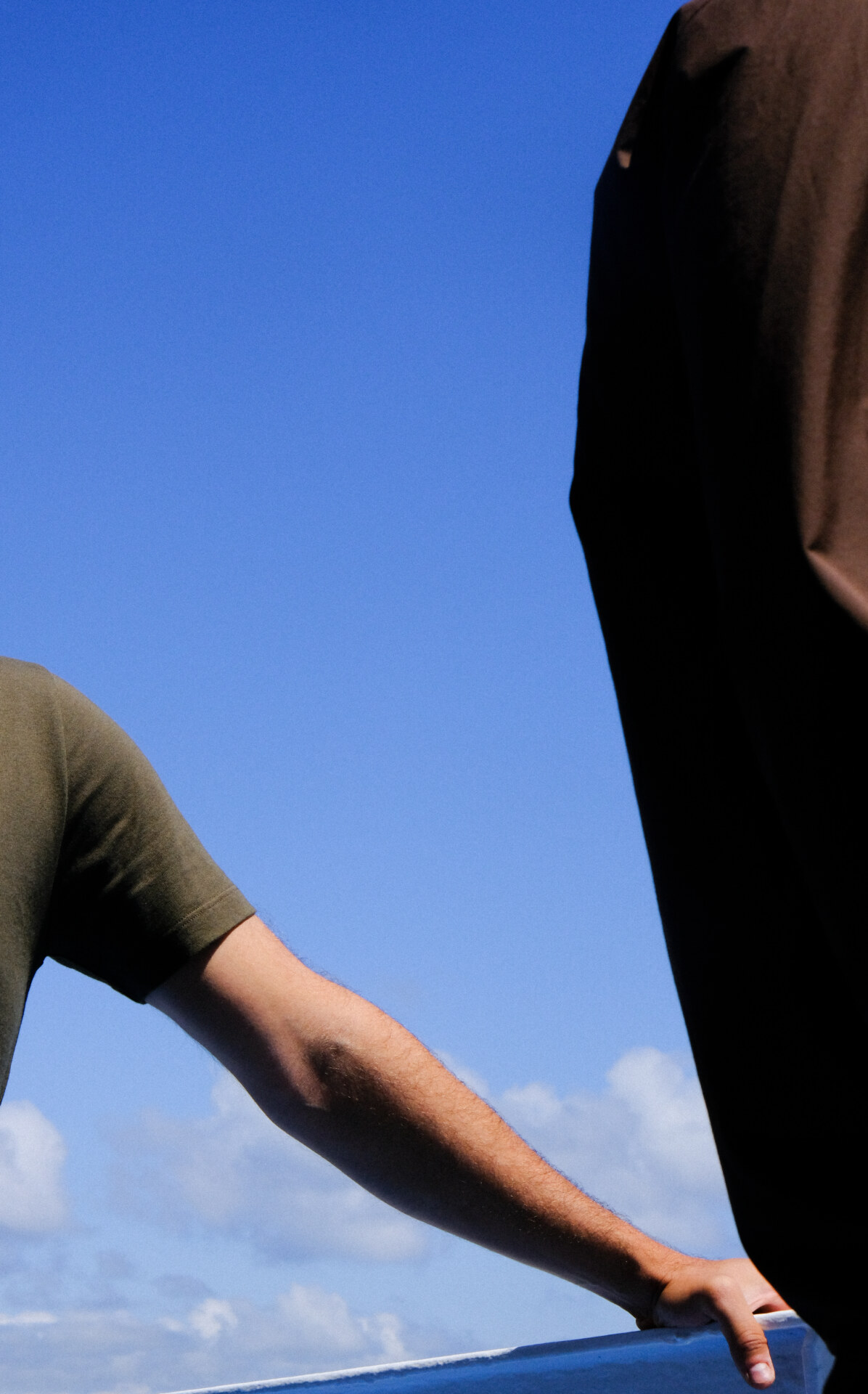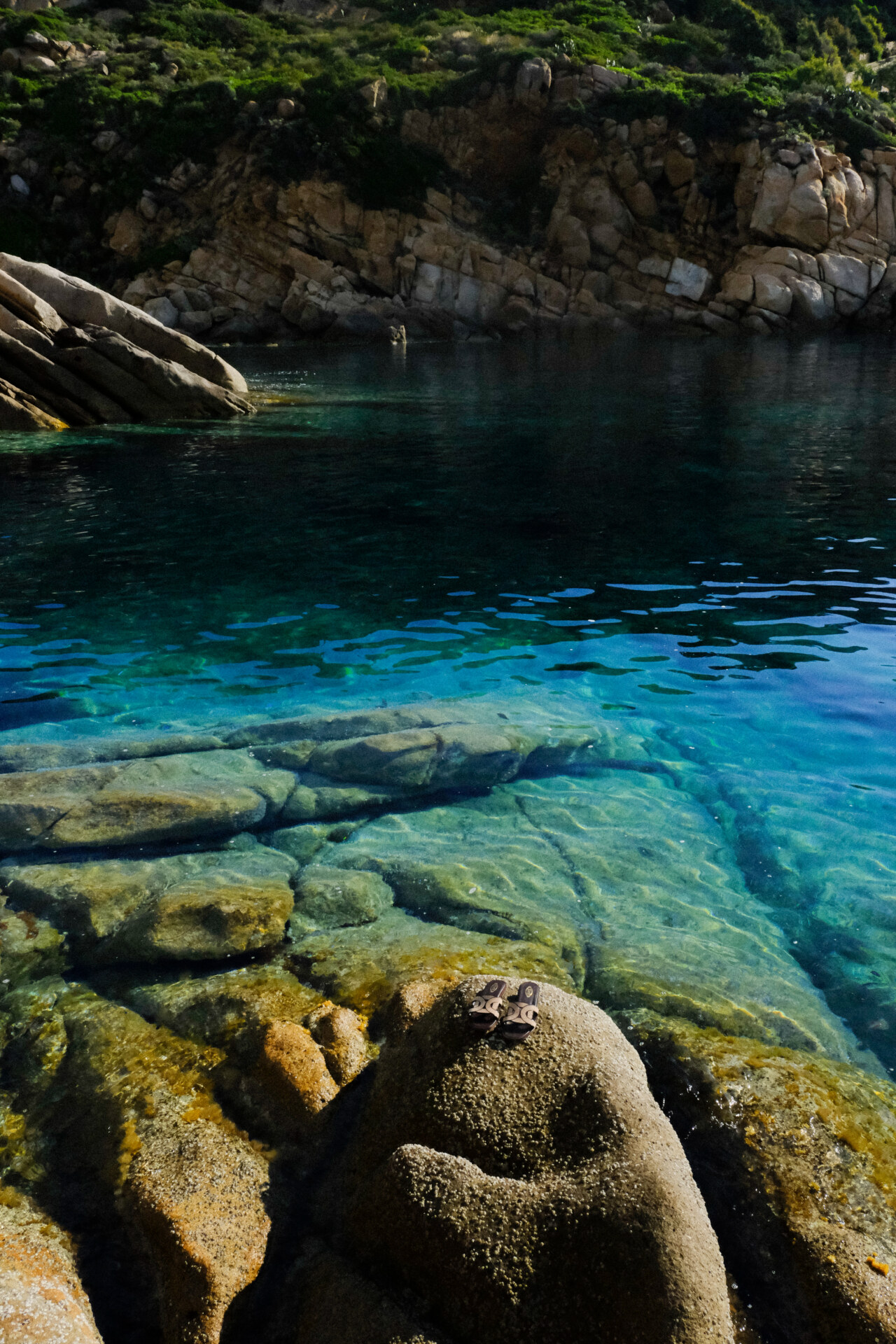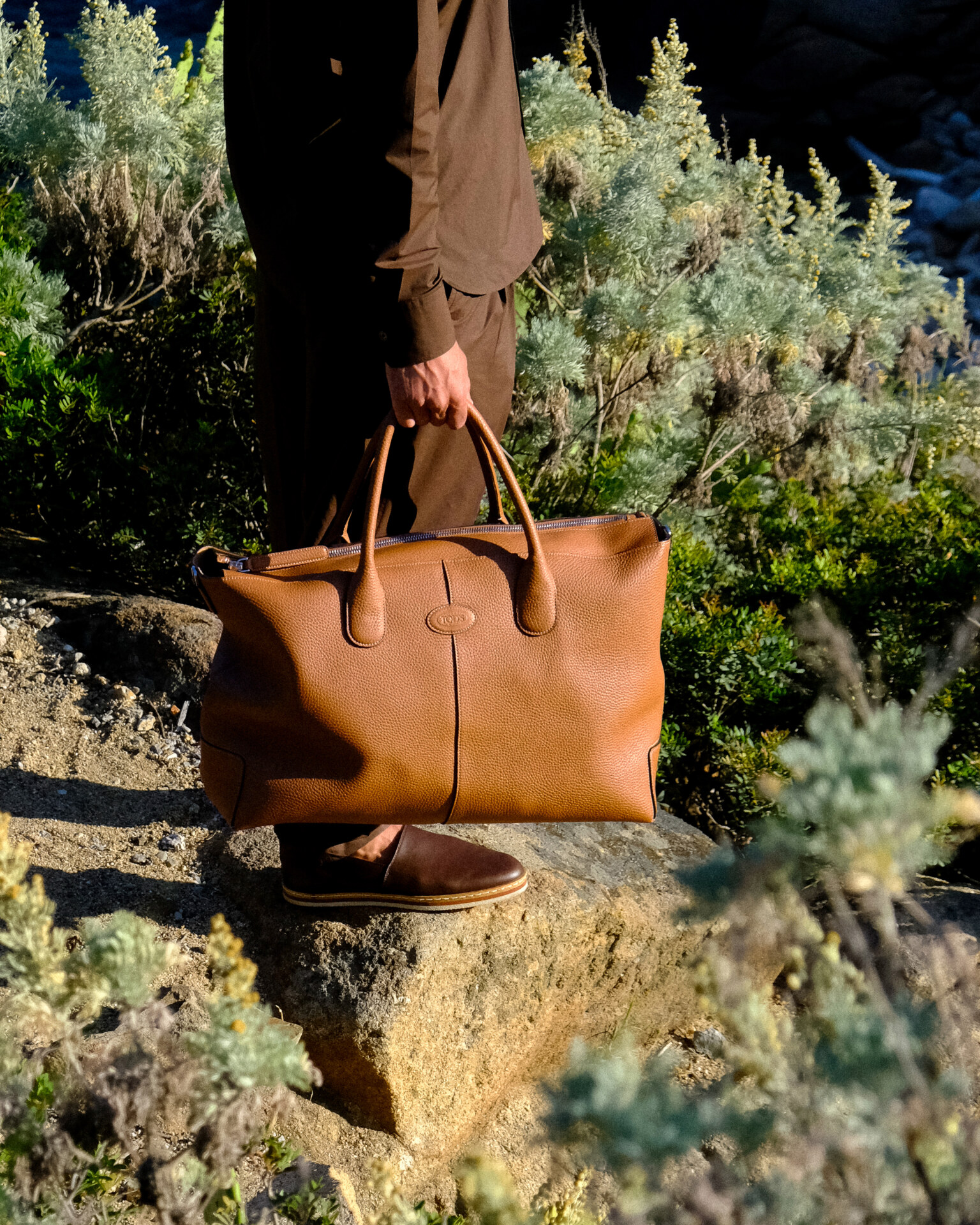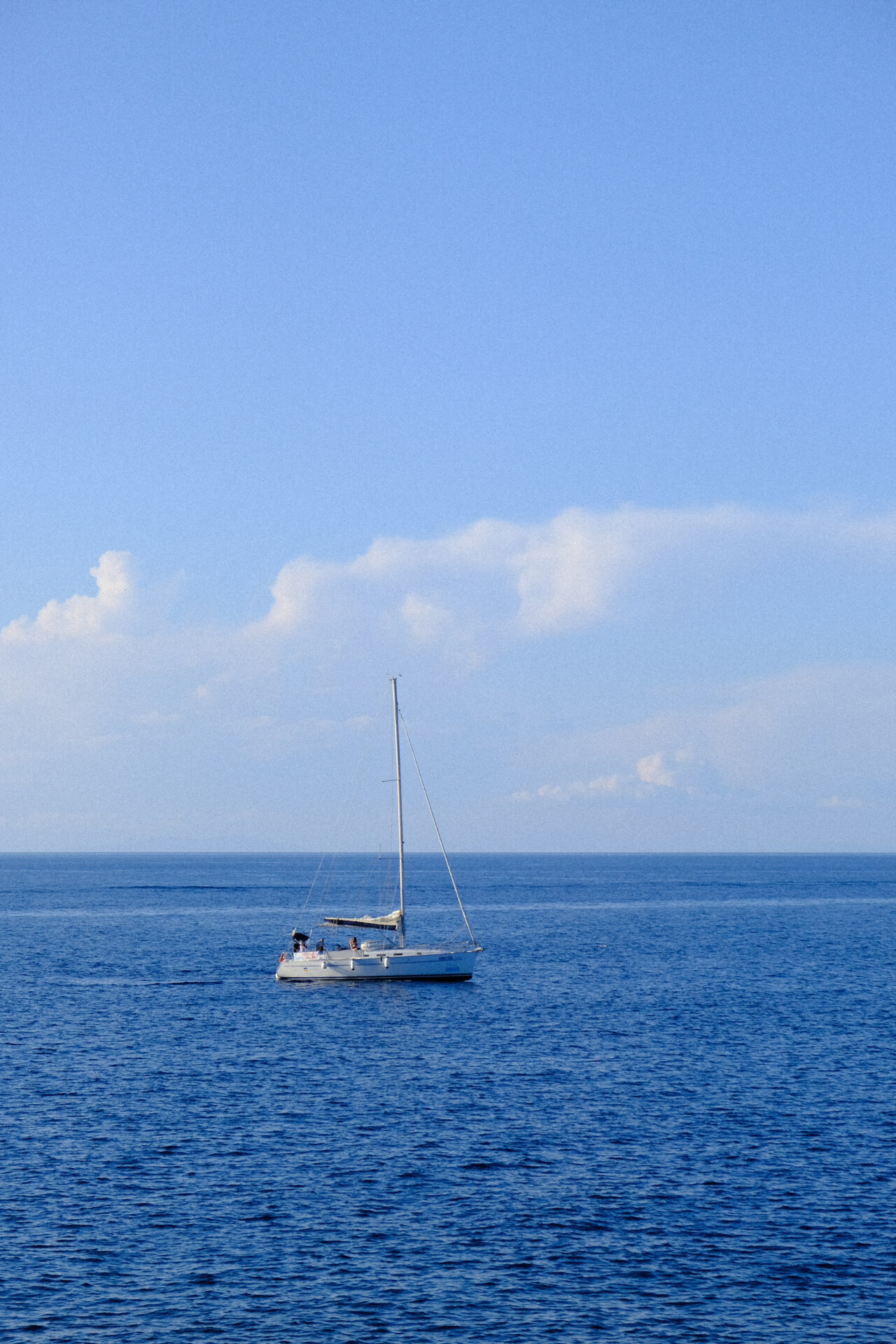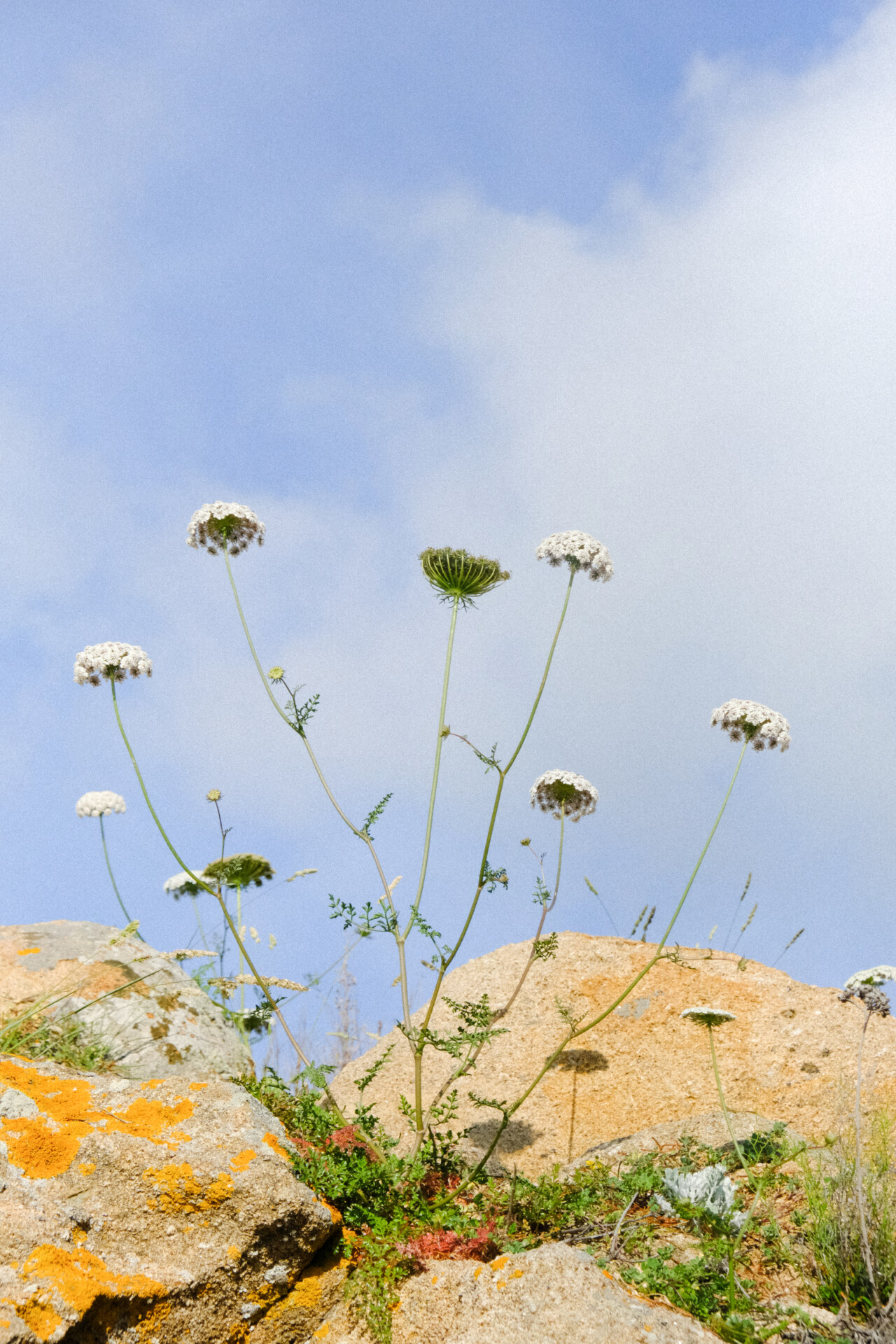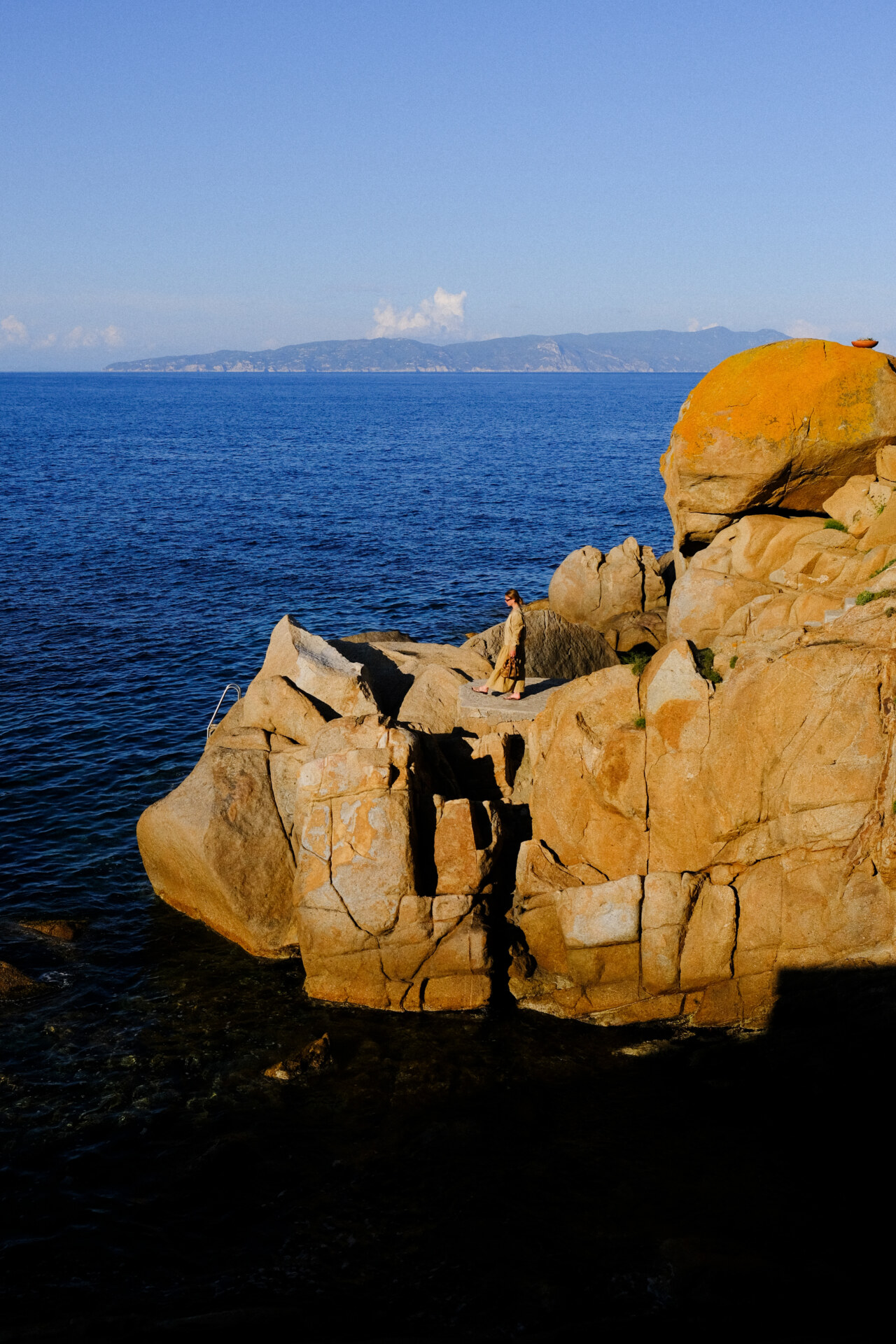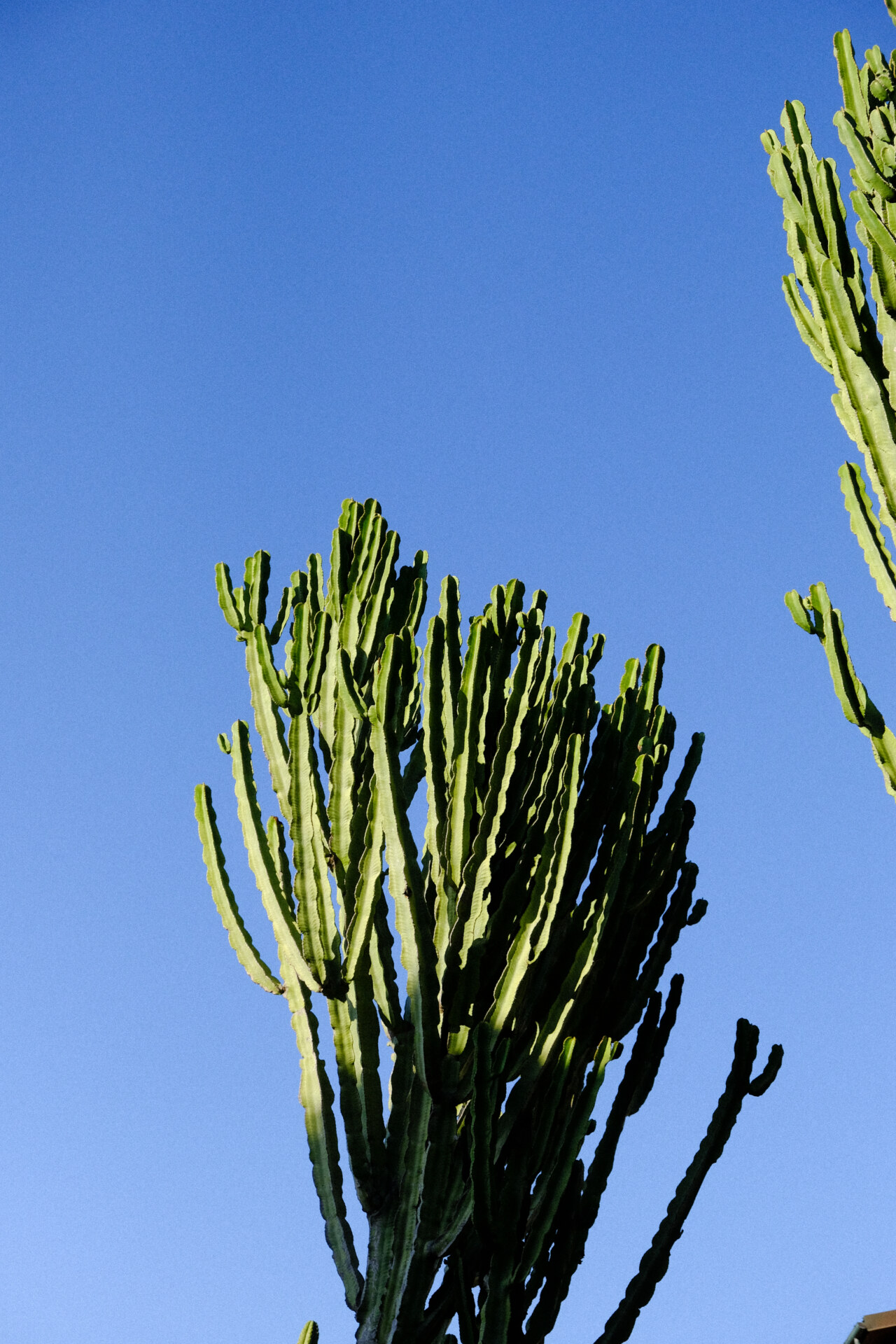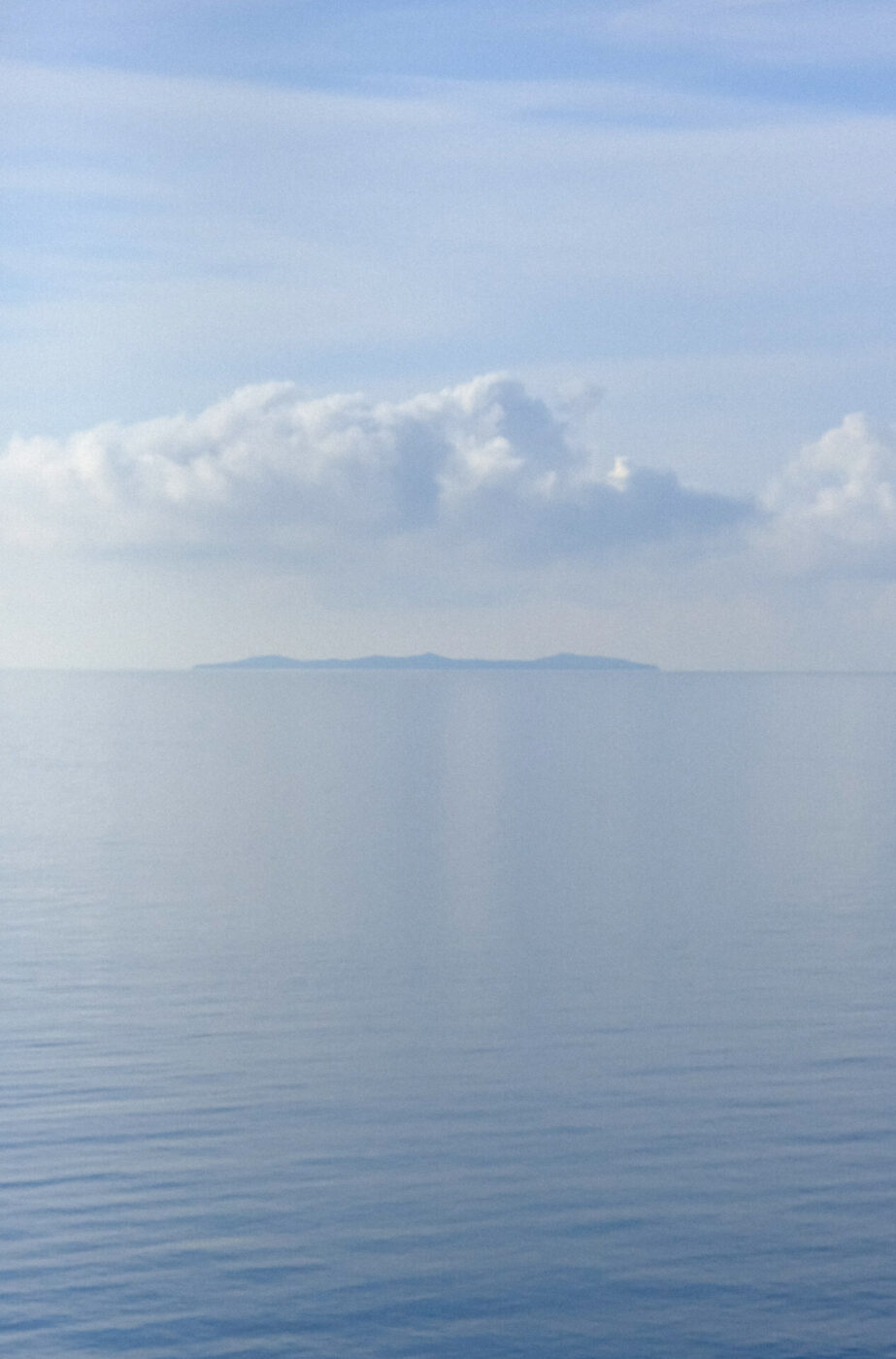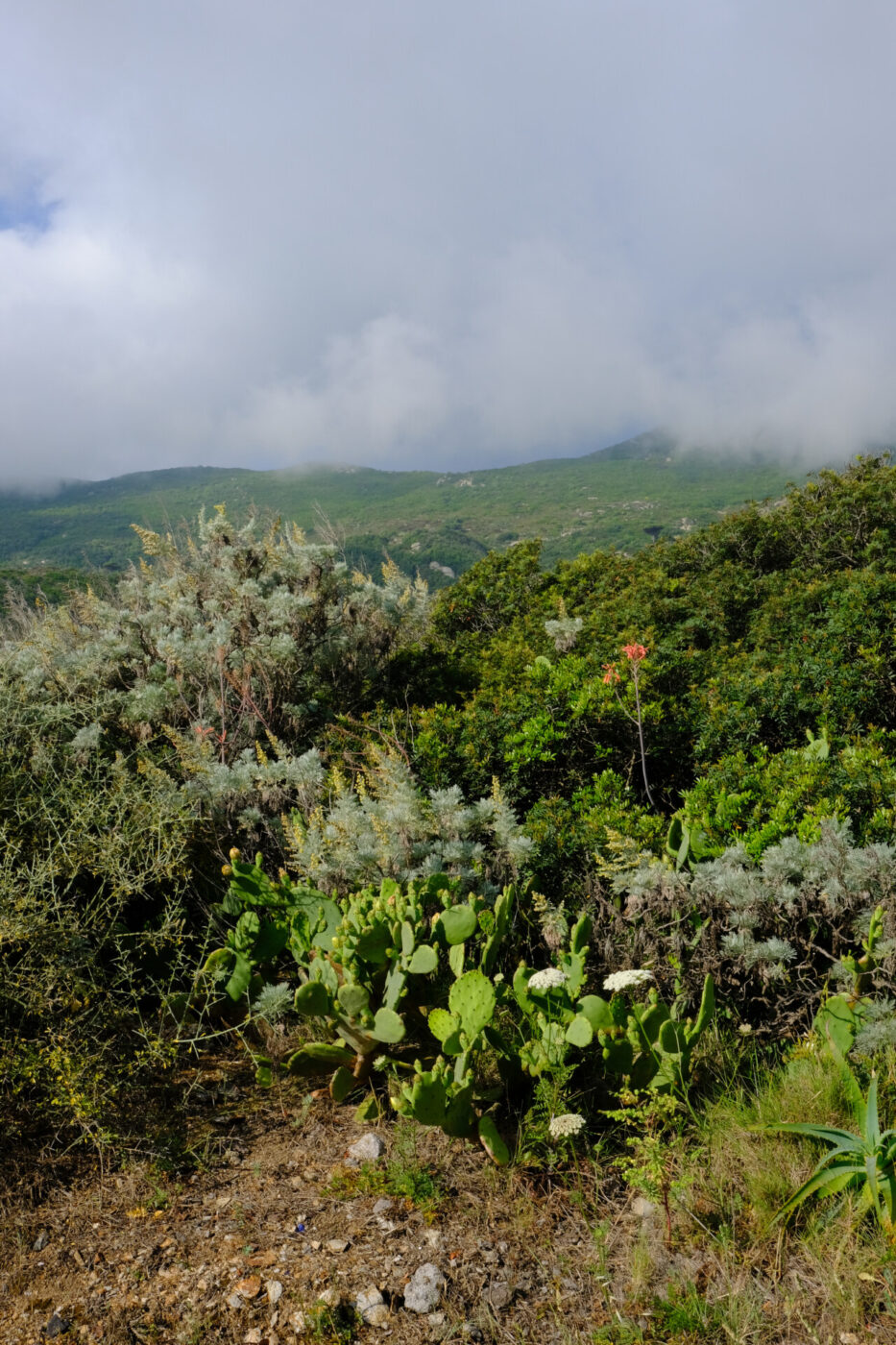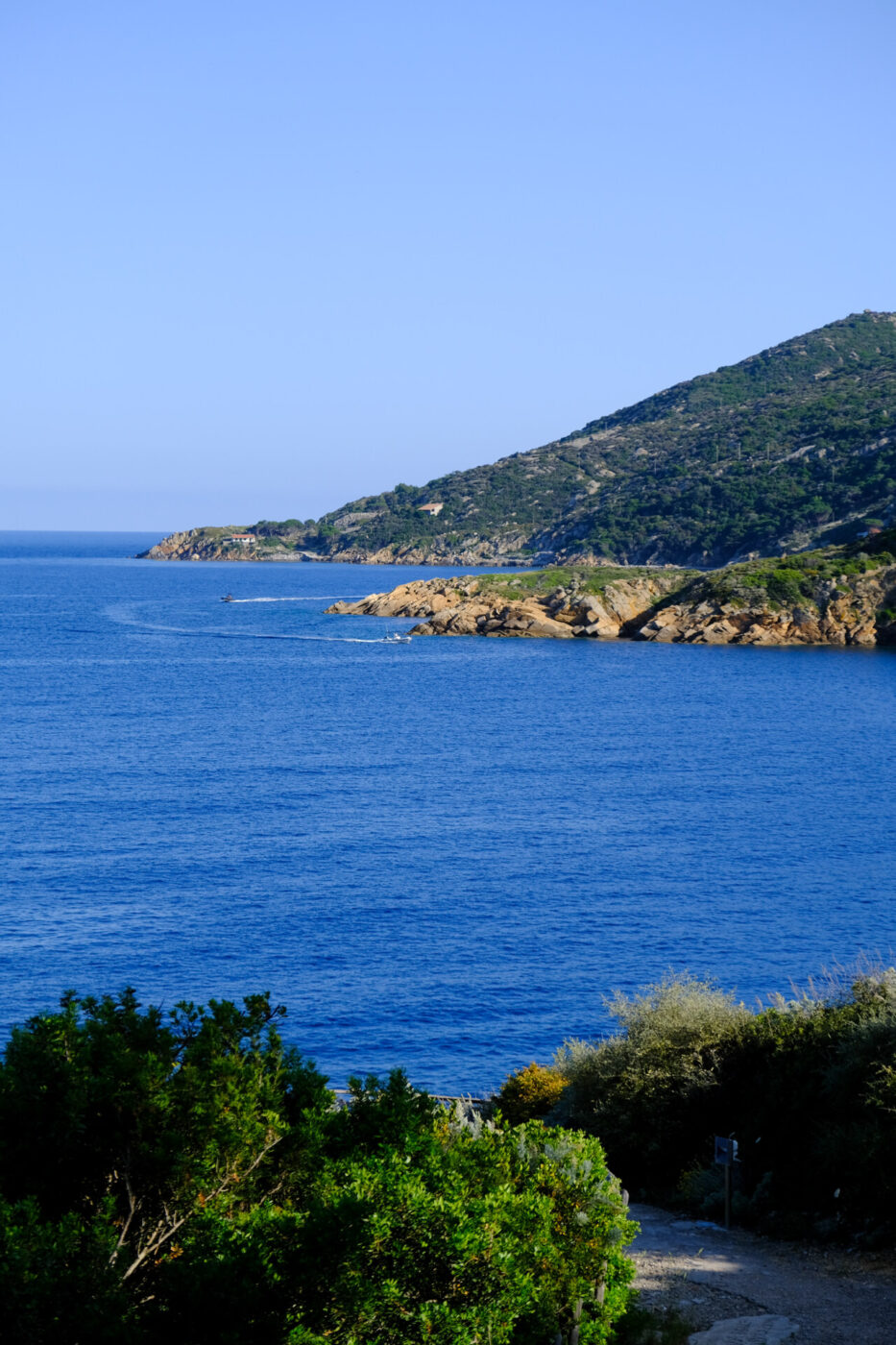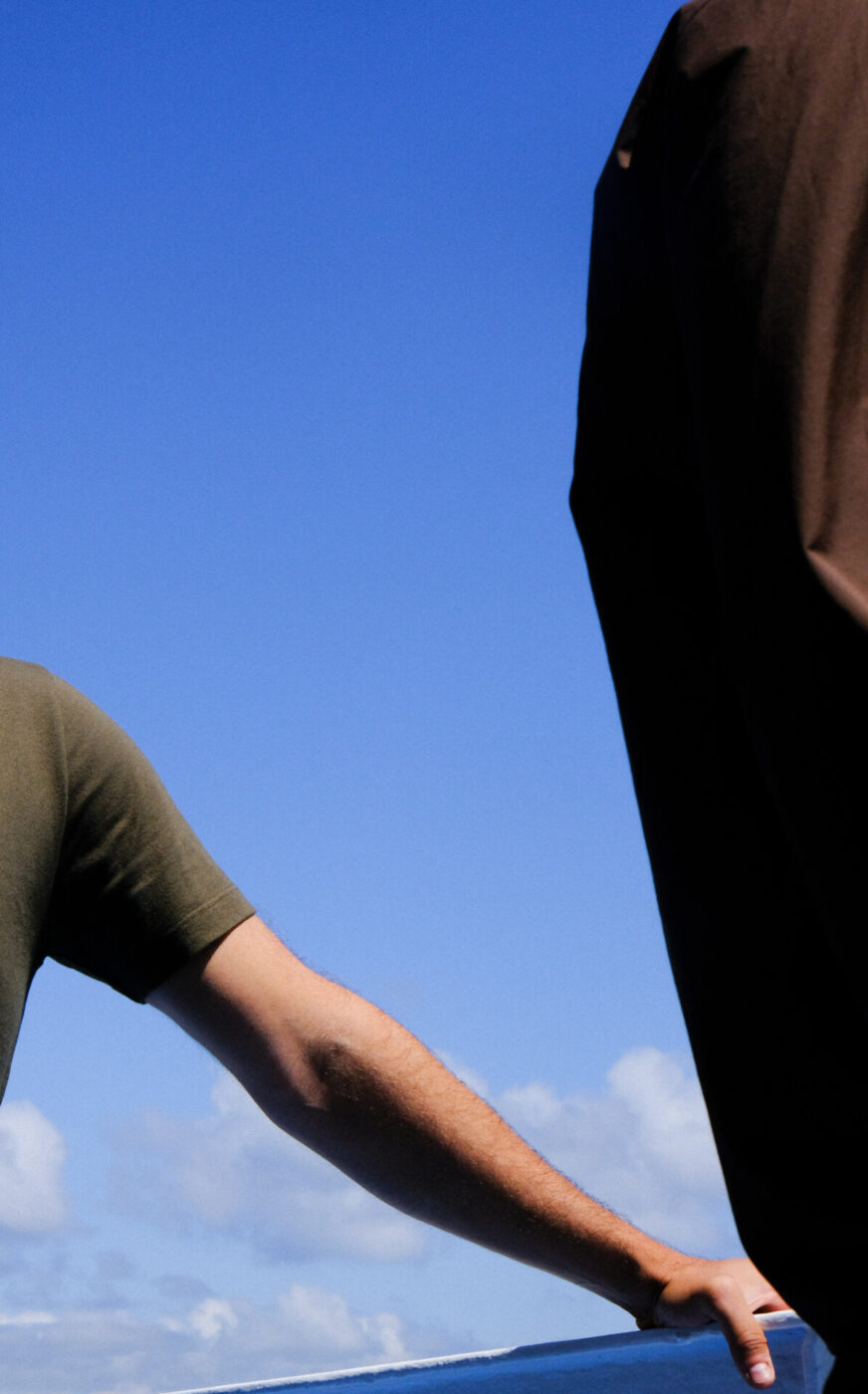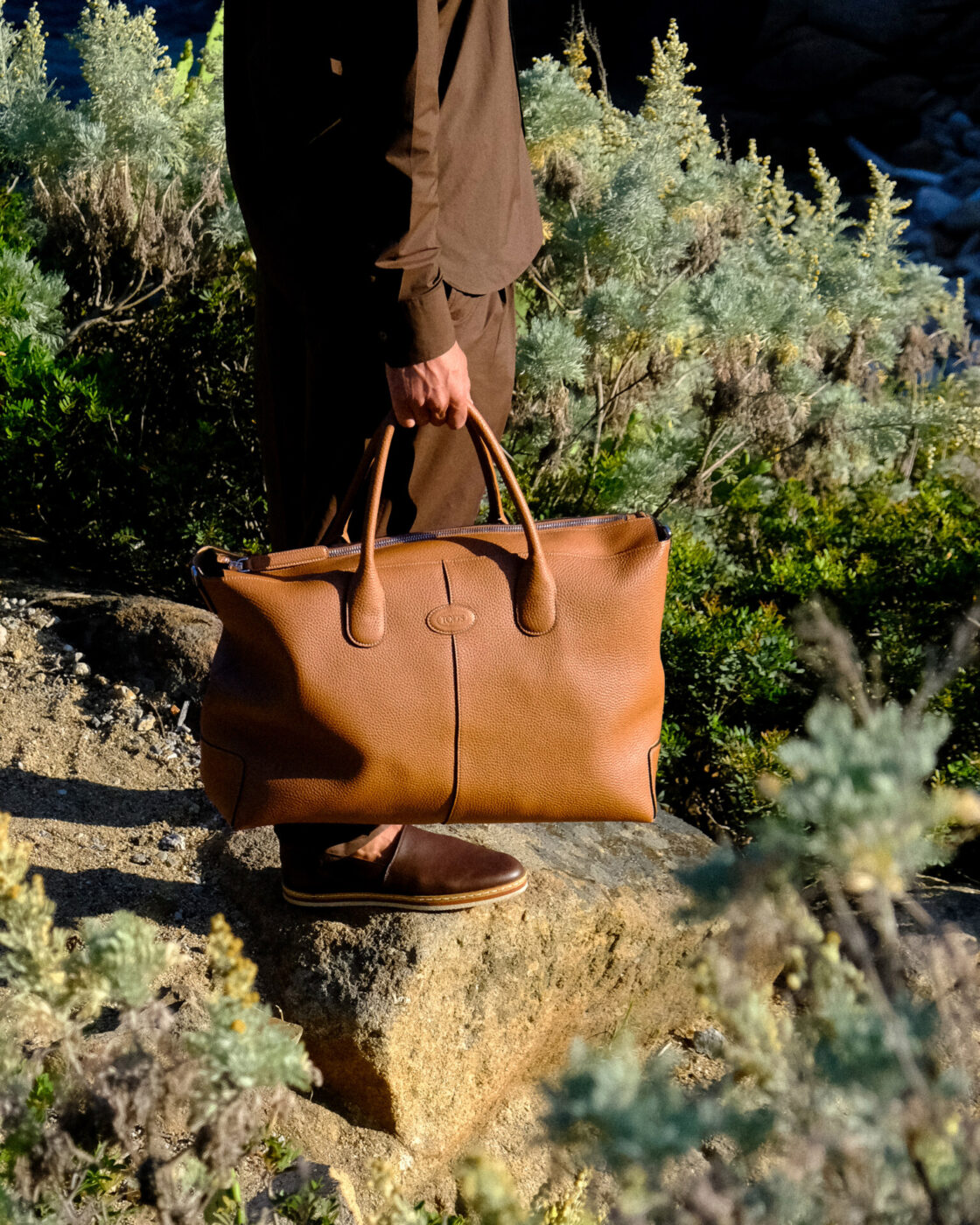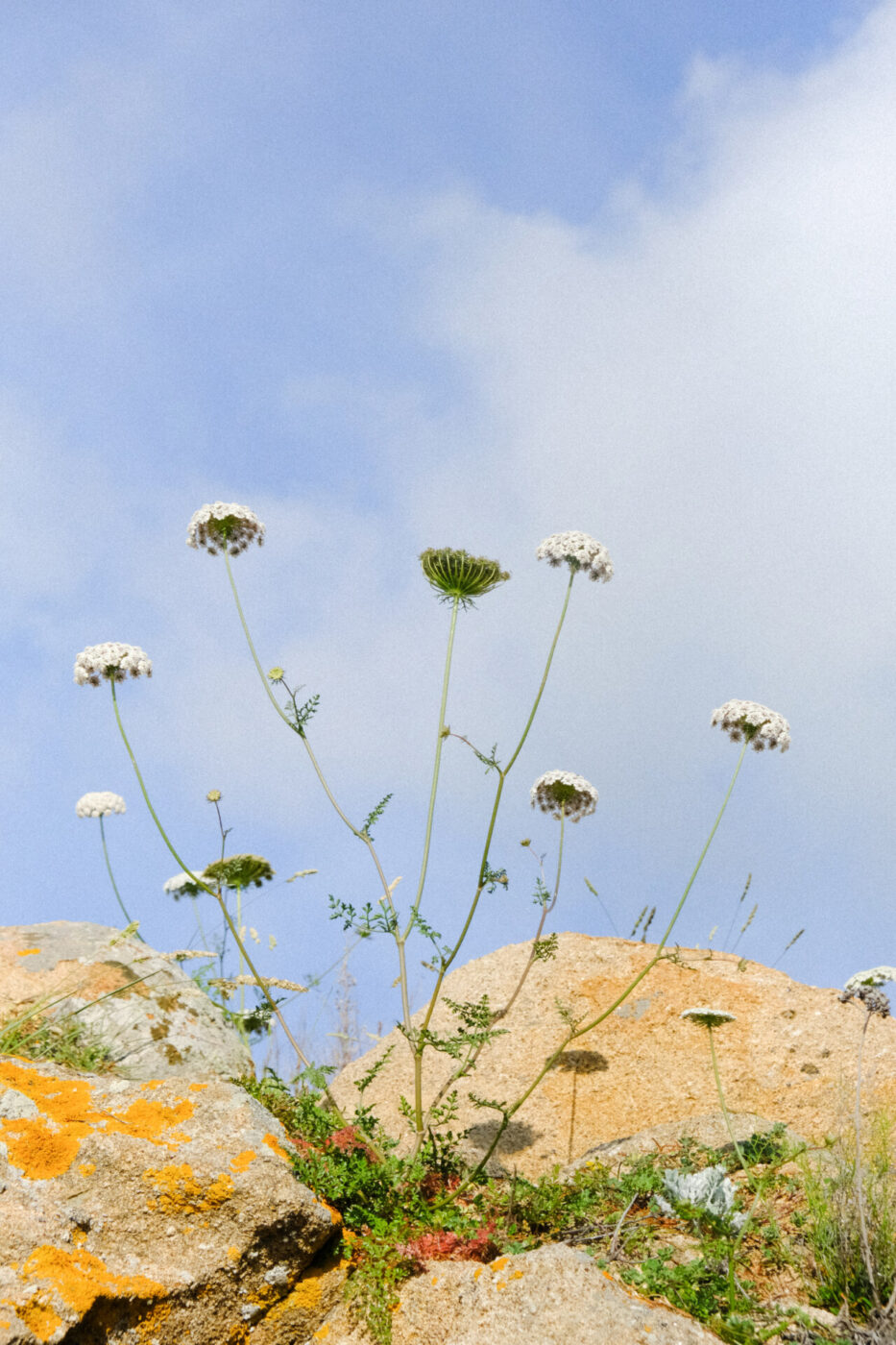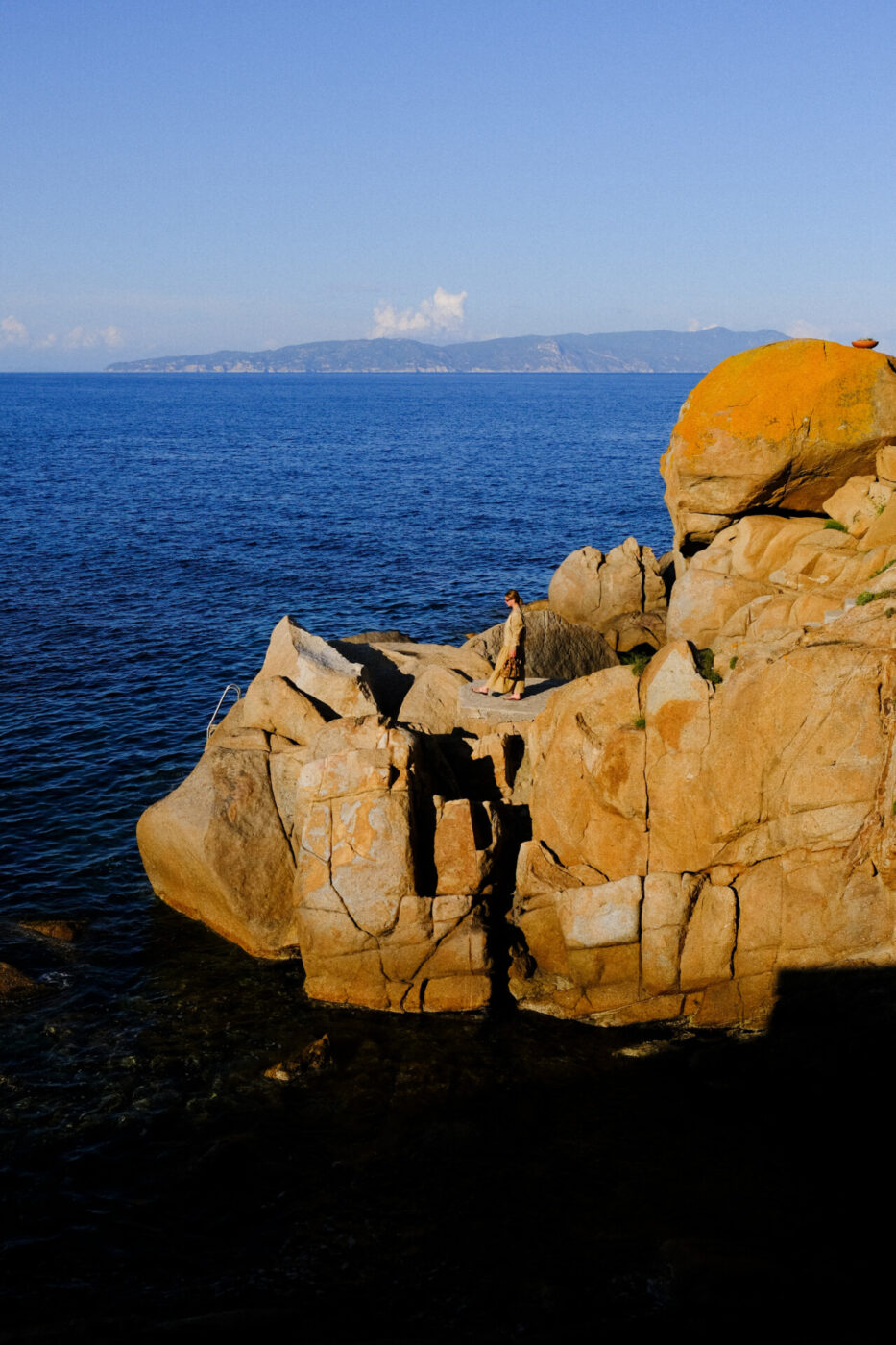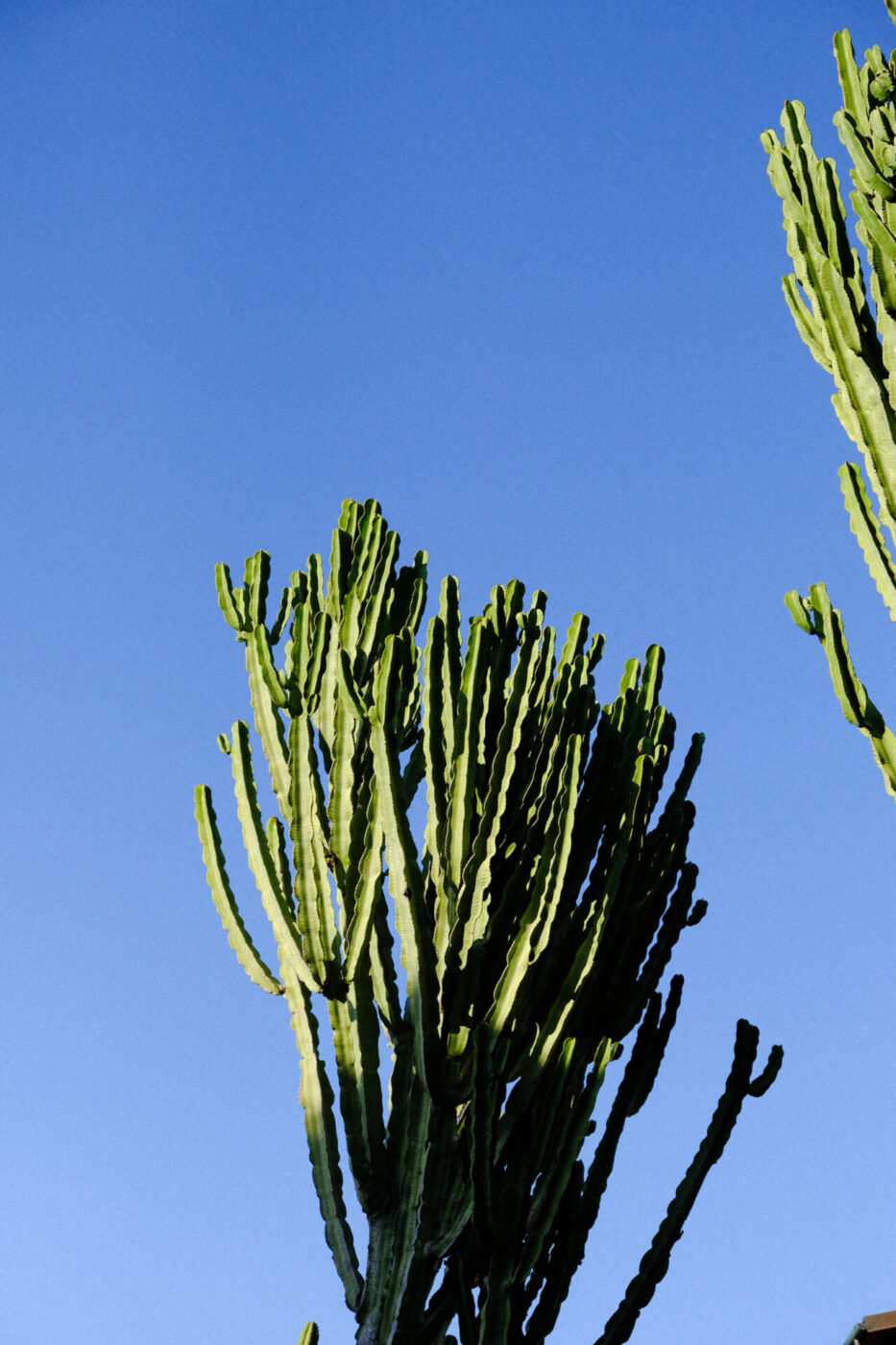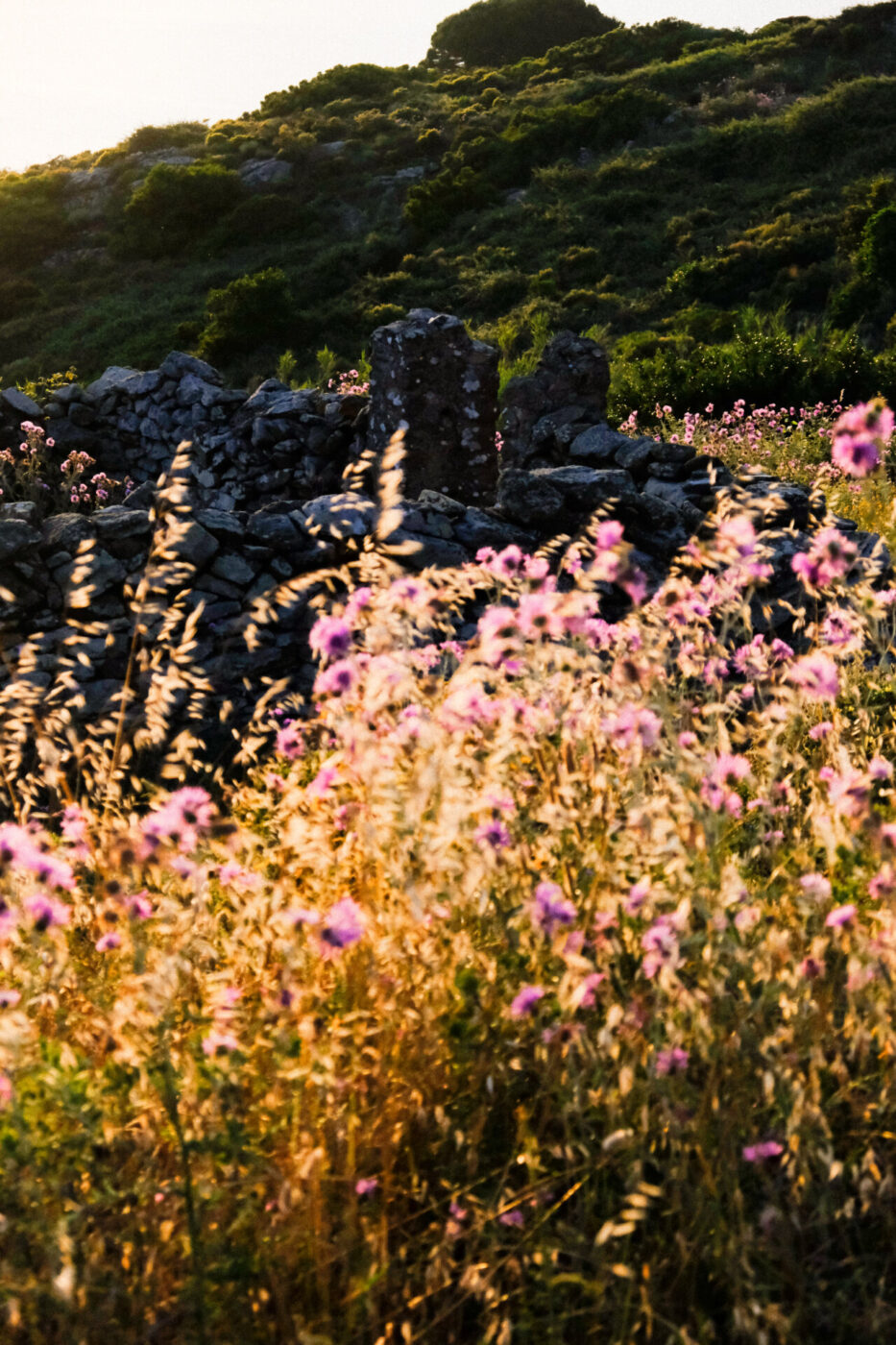“Sicura, sana, genuina” (“Safe, healthy, genuine”) is how Luigi Bernardini describes his childhood on Isola del Giglio. “It was an adolescence of total freedom.” The sun is setting orange through the dining room window of his restaurant, Ristorante da Maria, creeping closer and closer to the horizon until all that’s left is a blanket of blue. From this vantage point, you can’t see the stone walls of Giglio Castello old town, into which the restaurant is embedded, nor the forests sloping down to the rocky coastline–only the blue of sky and sea which, with the slight mistiness of the late spring, blends into one neverending expanse.
These days, before the summertime heat flattens the landscape, the island is peppered with color. The rocks are orange with lichen; cacti, pine trees, and grasses contribute a span of greens; and wildflowers, which messily line the edges of the roads, can be found in purples, blues, pinks, yellows, and white. The earthy tones of the land recall those of Tod’s Spring-Summer 2023 Collection. These days, jasmine bushes, heady and sweet, perfume the air, the scent reaching the upper decks of the ferry as it approaches port. These days, the water is clear and crystalline, and an early morning dip is, at first, a shock to the system. A minute later, the temperature is exactly right. These days, the humidity of summer hasn’t yet settled in–the air still has a slight chill in the mornings–and so you can see all the way to Giannutri to the southeast and Monte Cristo, the nature reserve of literary fame, to the west.

The second largest island in the Tuscan Archipelago, Giglio is only an hour, 16 km, by ferry from Porto Santo Stefano, and yet is a world of its own. Ninety percent of its surface area is covered with Mediterranean vegetation, and it’s one of those places that retains a real island feel–untouched, remote, peaceful–thanks to a lack of a robust tourist infrastructure. Local life is bustling and bright, and the island somehow contains within its 23.8 km squared everything you might ever need. The harbor of Giglio Porto is lined with restaurants (among the best, Da Ruggero), bars, and cafes where couples dance to Italian classics at aperitivo hour. In front, the fisherman sells his catch of the day from a truck. A street behind, you find the butcher Macelleria da Lorenzo e Franco, the fruttivendolo, the bakery Panificio Di Cristina. From the small window of the former peek soft, soft polpette in tomato sauce, herb-forward roast chickens, and fluffy baby potatoes. The latter offers sweet and sour frollini with cherry jam, chocolate and fig biscotti, and little squares of focaccia–perfect for merenda. Their wares are great–and not just great for a small island, but great in a way that would stand out even in cosmopolitan cities like Rome or Milan.
It makes sense that Luigi recalls his childhood so fondly. Here, there’s the freedom to come and go barefoot; to play soccer in the piazza with the other kids of the neighborhood, no parental guidance needed; to swim in the sea or hike in the forest without a moment’s planning. Francesca, age 21, mirrors Luigi’s sentiments. “The island offers me freedom, authentic happiness, nature, simplicity, and love.” She continues, “Giglio’s nature makes me get in touch with myself more than anything else. Walking in the woods and doing boat trips, even late at night, I have known true freedom.”
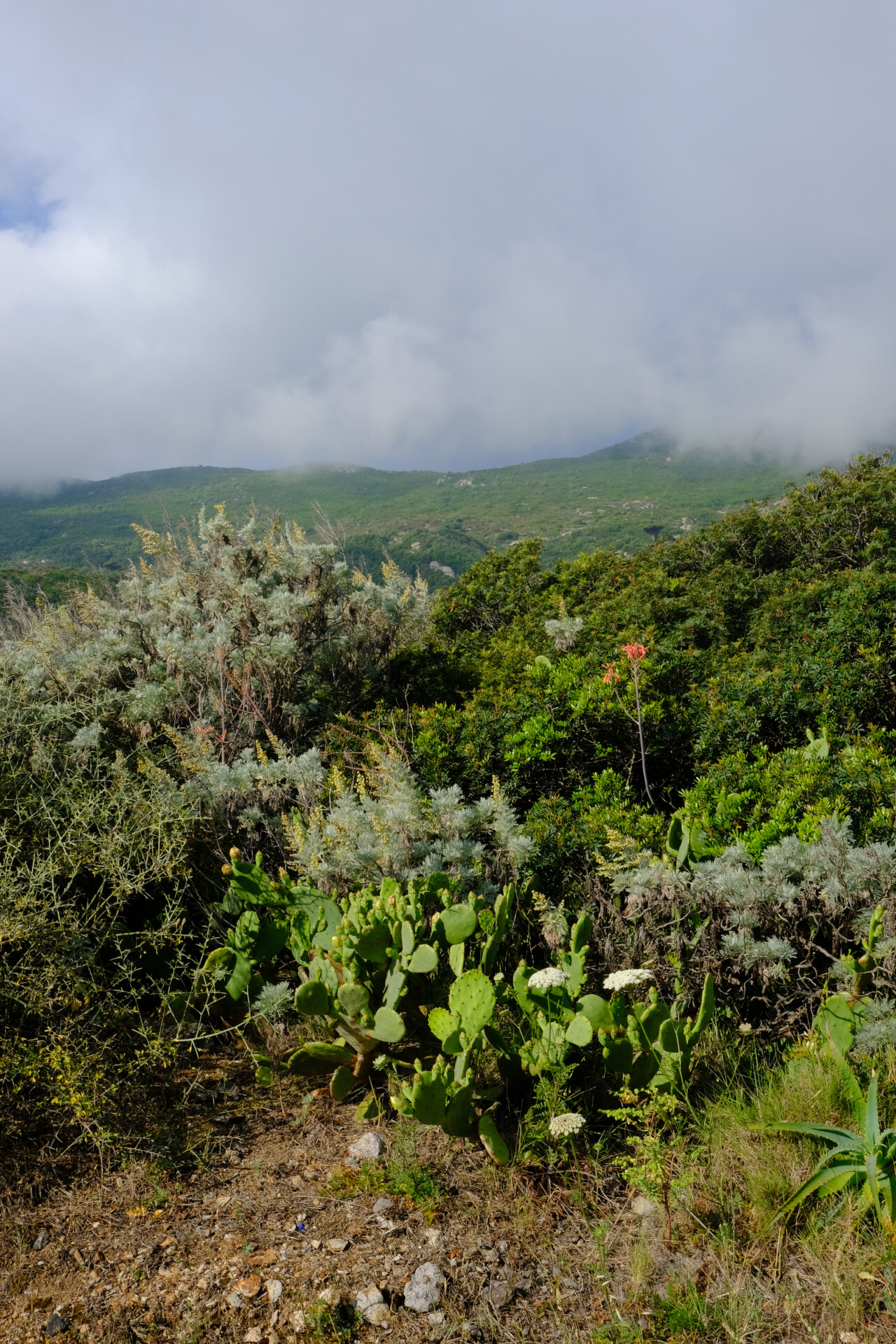
But there’s no high school on Giglio, and these days of childhood freedom are numbered. Most teens, including Luigi, choose to go to high school on the mainland, moving with a relative or to live with another for those four years. The ones that remain work. “We are educated from an early age how to do the work and how to make sacrifices necessary to achieve results,” Francesca says.
Centuries ago, the Romans established a settlement on the island and used it for agriculture, primarily cultivating vineyards and olive groves, and today the exports are more or less the same. (The local “Ansonaco” wine is a dry, full-bodied orange that’s been around since way before natural wine bars counted them on their menus.) Many of the island’s 1,400 people are employed by these aziende; others by the tourism industry, renting boats and scooters or offering short-term rentals to the seasonal market. “There are many young people in the summer, but, during the winter, almost everyone leaves. Those who work in summer activities… remain on the island, and it is as if they go into lethargy!” Francesca exclaims. Regardless, off-season is her favorite time of year, when nature is more wild, and tourism, which she claims “somewhat hides this natural side,” dies down. “Our little house is once again inhabited by people who all know each other.”
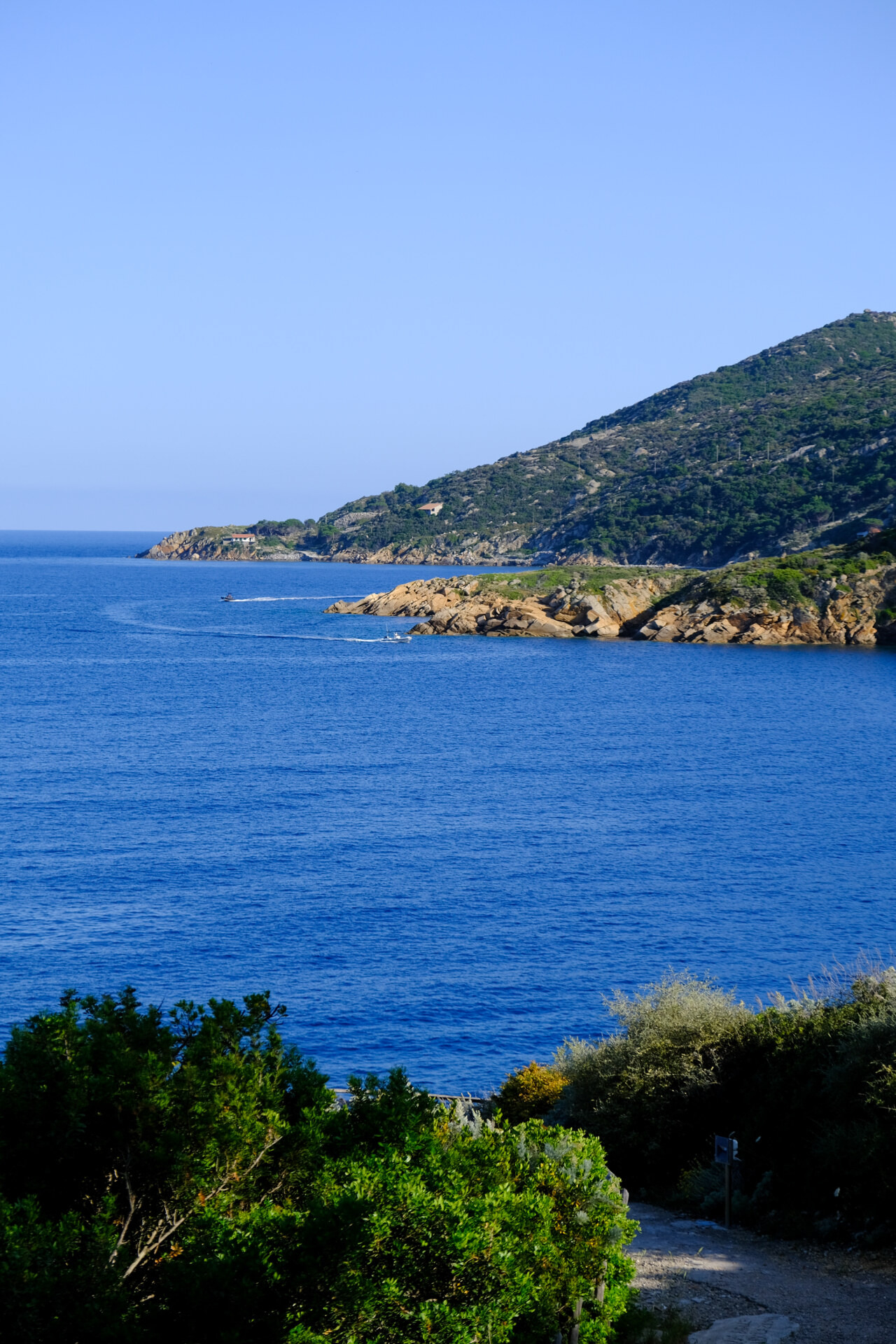
After high school, Luigi continued with university in Florence. “Brutto” (“Ugly”) is the one word he has to give to his time in the city. He made the four-hour commute to his island every weekend, spent every summer home, and, needless to say, returned right after graduation. Franesca echoes, “Living in the city is exhausting. I’m not made for buildings, chaos, smog, traffic, frenzy, and stress.”
And even after just a few days on the island, it’s easy to see where they’re coming from. Giglio contains within its craggy cliffs a certain carefreeness that only an island can give you. In cities, time always seems to be a factor, and a limiting one at that. On Giglio, nothing is that far away, and, as there really aren’t that many options, there’s never that feeling of missing out, of needing to be in multiple places at once. Late lunches seaside, at Arenella or Cannelle, with no shoes; cards and Coca Cola post swims; aperitivo at L’acciuga as the sun sets over docked boats; little paths off the sides of roads to get where you need to go. Life here is the epitome of Italian summer, the way it has always been and the way it should always be–wholly unpretentious, wholly about appreciating the things that come free. The salt, the sea, the fresh air, the colors of nature, the community. “Our parents were born and raised together, and we children have done exactly the same, so there is a bond between everyone that is really strong,” Francesca finishes. “We all consider ourselves true siblings.”
Returning to the mainland by traghetto, pits settle inside stomachs. Giglio’s peace is too easy to get used to. But what a sweet surprise it was to go off-season, to get a glimpse of a summer to come.
